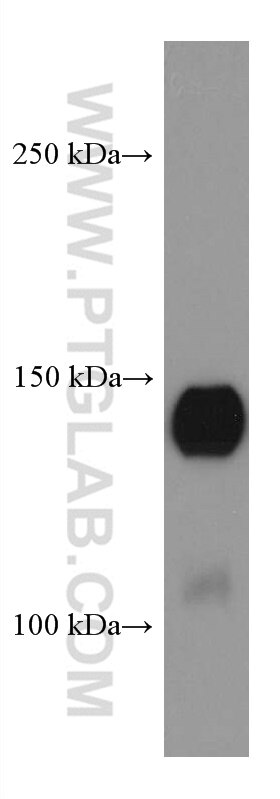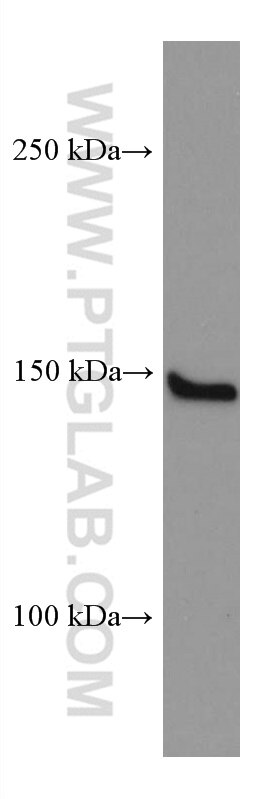Anticorps Monoclonal anti-SPARCL1
SPARCL1 Monoclonal Antibody for WB, ELISA
Hôte / Isotype
Mouse / IgG1
Réactivité testée
Humain
Applications
WB, ELISA
Conjugaison
Non conjugué
CloneNo.
1A9E7
N° de cat : 67511-1-Ig
Synonymes
Galerie de données de validation
Applications testées
| Résultats positifs en WB | salive humain, cellules Raji |
Dilution recommandée
| Application | Dilution |
|---|---|
| Western Blot (WB) | WB : 1:1000-1:6000 |
| It is recommended that this reagent should be titrated in each testing system to obtain optimal results. | |
| Sample-dependent, check data in validation data gallery | |
Informations sur le produit
67511-1-Ig cible SPARCL1 dans les applications de WB, ELISA et montre une réactivité avec des échantillons Humain
| Réactivité | Humain |
| Hôte / Isotype | Mouse / IgG1 |
| Clonalité | Monoclonal |
| Type | Anticorps |
| Immunogène | SPARCL1 Protéine recombinante Ag29092 |
| Nom complet | SPARC-like 1 (hevin) |
| Masse moléculaire calculée | 664 aa, 75 kDa |
| Poids moléculaire observé | 140 kDa |
| Numéro d’acquisition GenBank | BC033721 |
| Symbole du gène | SPARCL1 |
| Identification du gène (NCBI) | 8404 |
| Conjugaison | Non conjugué |
| Forme | Liquide |
| Méthode de purification | Purification par protéine G |
| Tampon de stockage | PBS with 0.02% sodium azide and 50% glycerol |
| Conditions de stockage | Stocker à -20°C. Stable pendant un an après l'expédition. L'aliquotage n'est pas nécessaire pour le stockage à -20oC Les 20ul contiennent 0,1% de BSA. |
Informations générales
SPARC-like protein 1 (SPARCL1), also known as SC1 or Hevin, is an extracellular matrix glycoprotein that belongs to the SPARC family. SPARCL1 is widely expressed in normal and cancer tissues, and has been shown to regulate cellular adhesion and migration. SPARCL1 has been implicated in tumor initiation, formation, and progression of various cancers, including pancreatic, prostate, bladder, ovarian, breast and non-small cell lung cancers.
Protocole
| Product Specific Protocols | |
|---|---|
| WB protocol for SPARCL1 antibody 67511-1-Ig | Download protocol |
| Standard Protocols | |
|---|---|
| Click here to view our Standard Protocols |



